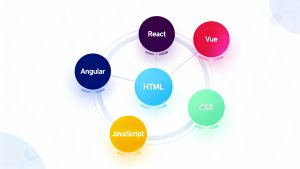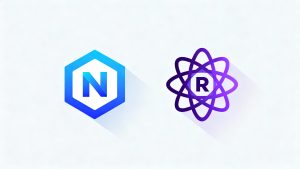In today’s data-centric digital landscape, software developers are not just coders—they are architects of information flow. Whether you are building a simple task manager or a complex, real-time financial analytics dashboard, data storage and access are central to your application’s functionality and performance. And that is exactly where Database Management Systems (DBMS) come into play.
A robust DBMS does far more than store data—it manages how data is created, retrieved, updated, and deleted, while also ensuring data integrity, concurrency, security, and scalability. Choosing the right database system can mean the difference between a lightning-fast user experience and a sluggish, unstable app.
As application demands grow—across mobile, web, IoT, and cloud-native platforms—developers must choose from a wide variety of DBMS options:
- Relational databases like MySQL and PostgreSQL for structured, ACID-compliant data.
- NoSQL databases like MongoDB and Firebase Firestore for flexible, schema-less designs and real-time interactions.
- In-memory databases like Redis for ultra-fast caching and session handling.
- Graph databases like Neo4j for modeling complex, interconnected relationships.
- Time-series databases like InfluxDB for metrics and event data over time.
Understanding each system’s strengths, limitations, and optimal use cases is essential to becoming a well-rounded, strategic developer.
In this article, we will walk through the 10 best database management systems that every software developer in 2025 should be familiar with.
Importance of DBMS for Software Development
A DBMS provides developers with structured methods to define, manipulate, retrieve, and manage data in applications. Some reasons why developers must choose the right DBMS:
- Efficient data storage and retrieval
- Secure and consistent transactions
- Query optimization for performance
- Scalability with growing data volumes
- Easy integration with backend frameworks
Types of Database Management Systems
- Relational DBMS (RDBMS) – Structured data using tables (e.g., MySQL, PostgreSQL)
- NoSQL DBMS – Flexible schema for unstructured/semi-structured data (e.g., MongoDB)
- In-memory DBMS – Fast read/write using RAM (e.g., Redis)
- Graph DBMS – Designed to represent and traverse relationships (e.g., Neo4j)
- Time-Series DBMS – Optimized for time-stamped data (e.g., InfluxDB)
Top 10 Database Management Systems for Software Developers
1. PostgreSQL
A powerful, open-source object-relational database known for its extensibility and standards compliance.
Use Case: Complex queries, data warehousing, geospatial data (PostGIS).
Example (Node.js + PostgreSQL):
javascript
const { Client } = require('pg');
const client = new Client({ connectionString: 'postgresql://user:pass@localhost/db' });
await client.connect();
const res = await client.query('SELECT NOW()');
console.log(res.rows);
await client.end();2. MySQL / MariaDB
MySQL is one of the most widely used relational DBMS systems, especially for web applications. MariaDB is its open-source fork with performance enhancements.
Use Case: Web apps, CMS platforms like WordPress.
Example (PHP + MySQL):
php
$conn = new mysqli("localhost", "user", "pass", "database");
$result = $conn->query("SELECT * FROM users");
while($row = $result->fetch_assoc()) {
echo $row["name"];
}
$conn->close();3. MongoDB
A NoSQL, document-oriented database that stores data in JSON-like BSON format.
Use Case: Real-time analytics, IoT, content management, mobile apps.
Example (Node.js + MongoDB):
javascript
const { MongoClient } = require("mongodb");
const uri = "mongodb://localhost:27017";
const client = new MongoClient(uri);
await client.connect();
const users = client.db("app").collection("users");
const docs = await users.find({}).toArray();
console.log(docs);
await client.close();4. Redis
An in-memory key-value store that supports a variety of data structures like strings, hashes, and lists. Great for caching and real-time applications.
Use Case: Caching, message queues, session management.
Example (Node.js + Redis):
javascript
const redis = require("redis");
const client = redis.createClient();
client.set("user:1", JSON.stringify({ name: "Ali" }));
client.get("user:1", (err, reply) => {
console.log(JSON.parse(reply));
});5. SQLite
A lightweight, file-based RDBMS ideal for prototyping, small apps, or embedded systems.
Use Case: Mobile apps (used in Android/iOS), IoT devices.
Example (Python + SQLite):
python
import sqlite3
conn = sqlite3.connect('example.db')
c = conn.cursor()
c.execute('CREATE TABLE IF NOT EXISTS users (id INT, name TEXT)')
c.execute("INSERT INTO users VALUES (1, 'Aarav')")
conn.commit()
conn.close()6. Microsoft SQL Server
An enterprise-level RDBMS designed for high-performance workloads. Supports T-SQL for advanced querying.
Use Case: Enterprise reporting, ERP systems, .NET integrations.
Example (C# + SQL Server):
csharp
using(var connection = new SqlConnection("Server=.;Database=myDB;User Id=sa;Password=pass;"))
{
connection.Open();
var command = new SqlCommand("SELECT * FROM Products", connection);
var reader = command.ExecuteReader();
while (reader.Read()) {
Console.WriteLine(reader["Name"]);
}
}7. Firebase Realtime Database / Firestore
Managed NoSQL cloud database from Google for building serverless and real-time apps.
Use Case: Mobile and web apps, chat apps, collaborative tools.
Example (Firebase + JavaScript):
javascript
import { getDatabase, ref, set } from "firebase/database";
const db = getDatabase();
set(ref(db, 'users/1'), {
username: "priya123",
email: "priya@example.com"
});8. Neo4j
A graph database designed to handle complex relationships through nodes and edges.
Use Case: Social networks, recommendation engines, fraud detection.
Example (Cypher Query):
cypher
CREATE (a:Person {name: 'Rohan'})-[:FRIENDS_WITH]->(b:Person {name: 'Kavita'})9. Oracle Database
One of the oldest and most robust relational databases, ideal for enterprise workloads.
Use Case: Financial applications, government projects, data warehousing.
Note: Typically used in enterprise environments with proprietary setups.
10. InfluxDB
A purpose-built time-series database for storing events with timestamps.
Use Case: Monitoring, IoT sensors, financial trading logs.
Example (InfluxDB line protocol):
pgsql
temperature,location=office value=23.5 1629729935000000000Conclusion
Choosing the right Database Management System (DBMS) is not just a backend decision—it’s a foundational architectural choice that influences your application’s performance, reliability, scalability, maintainability, and even cost structure. Whether you’re developing a lightweight mobile app or architecting a multi-tenant enterprise solution, the database you select will shape your system’s future behavior.
Relational databases like PostgreSQL and MySQL are time-tested and remain critical for applications that require structured schemas, strong consistency, and transactional support. They’re ideal for financial systems, CMS platforms, and applications that require ACID compliance and relational integrity.
On the other hand, NoSQL databases such as MongoDB and Firebase Firestore are gaining traction in scenarios where flexibility, real-time data sync, and horizontal scalability are essential—such as chat applications, IoT systems, mobile-first apps, and microservices architectures. These systems provide the agility modern developers need when dealing with unstructured or rapidly evolving data models.
Beyond the popular choices, specialized databases like Redis (for in-memory caching), Neo4j (for graph-based relationships), and InfluxDB (for time-series data) serve niche use cases with exceptional efficiency. These allow developers to build smarter applications by optimizing for speed, context, and volume.
As a software developer in 2025 and beyond, your ability to evaluate use cases, understand data access patterns, and match them with the appropriate DBMS will define your architectural prowess. It’s not just about knowing SQL or being able to perform CRUD operations—it’s about making strategic choices that support your application’s evolution and user experience at scale.



